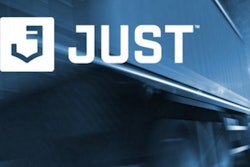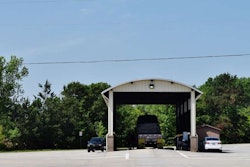 Download the GAO’s CSA report via this link.
Download the GAO’s CSA report via this link.The Government Accountability Office report on CSA, released two weeks ago, was a subject of considerable attention during morning presentations yesterday to the MCSAC’s CSA Subcommittee, with FMCSA’s Joe Delorenzo presenting what he believed were fundamental flaws with the GAO’s approach in the alternative methodology it proposed. Delorenzo said the approach “makes the assumption that because you didn’t have a crash you don’t have crash risk” and, if utilized, would put the agency “in a position where we’re regulating only large carriers.”
In its alternative, the GAO picked a baseline for rating a carrier at a minimum of 20 inspections for reliability. The reasoning behind that is basic statistics — more observations = better, more reliable measures.
In CSA today, as few as five relevant inspections in many of the BASIC categories of measurement over the course of a two-year period is sufficient to generate a score — and a wildly fluctuating, often high score for many of the smallest entities unlucky enough to get a couple hits with any violation whatsoever, as we’ve reported. GAO’s look at CSA concludes that the low number of inspections in the very-small-fleet realm makes the system’s rankings of those carriers unreliable at best, as I read it.
But FMCSA focused much of the morning yesterday defending the program by explaining differences in philosophy — they look at patterns of violations while GAO was focused on individual violations, for example — and reiterating study results that show carriers with BASIC percentile ranking above their intervention thresholds, marked by the “golden triangle” alert symbol, account for 90 percent of crashes.
By some measures, the GAO report does validate that a data-driven system such as CSA would be in fact an effective system for assessing crash risk on entities that have a high level of inspections in the system, and some subcommittee members were comfortable in such a belief.
Rudy Supina, of bus company DATTCO, started off a discussion about potential additions to a CSA-related item (a regulations review introduced by OOIDA’s Todd Spencer and discussed in this story) in MCSAC’s prioritized list of highway bill recommendations (discussed Mon.-Tues.) by urging FMCSA to consider alternative sources of data to beef up the system underpinning CSA scores: “In order for CSA to succeed, we have to feed the system. Where the data is accurate and clean we see that it does work.” He referred to California’s “annual [compliance review],” he said, and the potential of using that data, suggesting other states may have similar programs that could feed data into the federal system.
Then the talk turned toward inspections. Subcommittee member Bruce Hamilton, of the Amalgamated Transit Union, suggested advocating for more federal money coming into the states to increase the number of inspectors working the roadside and scale houses. “It looks like the GAO report gives the agency the argument to go to Congress for more money for more inspections,” he said.
“We’d love to have more data,” said Delorenzo in his presentation, “but our perspective is to be more proactive — we don’t need to wait for 20 inspections” over a two-year period to establish the need for an intervention.
Quade pointed to the prioritized recommendations issued by the full MCSAC the day prior. There was an item there to reduce state matching requirements relative to funds coming in from the federal Motor Carrier Safety Assistance Program grants. “If we doubled the size of the program” to go after a goal of doubling the number of inspections nationwide, Quade said, “each state has to double the size of their match…. Most states won’t have the wherewithal to double the size of their match.”
The recommendation to reduce state Basic MCSAP matching funds via the next highway bill was to reduce it by half, from 20 percent to 10 percent.
Ultimately, said Supina, “money for more inspections across the board is absolutely not what I meant,” adding that he couldn’t get behind more funding for “more inspections to inspect me, in addition to all the times I’m already inspected.”
Joe Rajkovacz of the California Construction Trucking Association feared such reaction to the GAO report on CSA. In a back-and-forth I had with him on OverdriveOnline.com here under a brief Overdrive Extra post about a few ways GAO’s criticisms of CSA reflected Overdrive in-depth reporting on the program from last year, Rajkovacz had this warning about reading a whole lot of positive news into it: “The GAO findings, while supportive of ‘some’ failings in the system, are also troubling because they also focused in on the lack of sufficient data on smaller carriers. Lack of data means: not enough inspections.”
Reprioritizing inspection criteria to grab and tie up more and more of the “little guys” among carriers on the road might be the onerous result.
At once, as we’ve also shown, there’s a four-fold greater inspection count per truck in the DOT’s own inspection data, when analyzed in the for-hire population, for independent owner-operators versus 500-plus-truck fleets. And as I noted Monday, it’s common practice in the Inspection Selection System to periodically “re-prioritize” carriers for inspection if they have no roadside data in the system.
In that sense, re-prioritization toward the small carrier is happening today. What are you seeing out there on the road? Drop a comment here.










